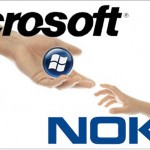Microsoft’s Downfall – How management can affect creativity
I think we all agree that nowadays, Microsoft is not the company it was once. A decade ago, they were ‘on top of the mountain’ and now, because of the “astonishingly foolish management decisions”, as Kurt Eichenwald (two-time George Polk Award winner and VanityFair’s newest contributing editor) stated, they are barely keeping their heads above the water. He made some investigations, and thanks to dozens of interviews and internal corporate records, he managed to find out details that show Microsoft’s true colors, while under ‘the reign’ of Steve Ballmer, the current C.E.O.
To paint a picture of how things work at Microsoft, today, one Apple product, namely the iPhone, generates more revenue than all of Microsoft’s wares combined.
How did this happen, exactly?
After interviewing a great number of employees, Kurt Eichenwald found out that, basically, a management system known as “stack ranking” reduced dramatically Microsoft’s ability to innovate, by forcing all the units to grade the employees’ performance (therefore ranking them as top performers, average and poor, by using percentages). The following example portraits the issue quite well. According to a former developer, if you were part of a team of 10 people, for instance, you already knew that, no matter how good the others were doing the day you came in the office, 2 people would get a spotless review, 7 mediocre reviews and 1 a terrible review. So, instead of focusing on competing with other companies, the employees were competing with each other. Moreover, a former engineer at Microsoft stated that the reviews conducted inside the company were not about improving the employees’ work quality and their further development, but about the need of making themselves more visible among the managers. Another former employee, a marketing manager this time, part of the Microsoft ship for over 16 years, stated that although the company had a great lead, the bureaucracy was one of the company’s biggest problems.
Another aspect revealed by Eichenwald was the fact that Microsoft had an e-reader prototype ready for market launch in 1998, but Bill Gates refused the team that presented this device, arguing that it wasn’t right for Microsoft: he didn’t like the user interface, because it wasn’t Windows material, according to a programmer that was involved in the project. The group was removed from the reporting line to Gates and then included in the major-product group, assigned to develop software for Office. Another issue was the touchscreen of the device: because Office was designed to inputting with a keyboard, not a stylus of finger, and because of the company’s loyalty to Windows and Office, they couldn’t jump on emerging technologies. Everything had to be designed for Windows.
To Kurt Massey, a former senior marketing manager, Microsoft is the technology’s answer to Sears: “In the 40s, 50s, and 60s, Sears had it nailed. It was top-notch, but now it’s just a barren wasteland. And that’s Microsoft. The company just isn’t cool anymore.”
What is there to learn from the Microsoft case? That things always change? That we have to be open-minded and at pace with technology? That performance reviews should be a combination of the current performance and future potential? Or that the employees should be listened to from times to time? Or all the above?
References:
Image Source:

Tags: Microsoft, Performance Management, Steve Ballmer





